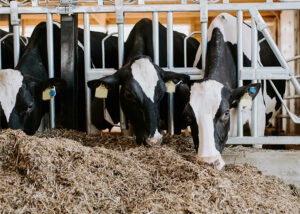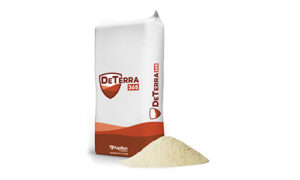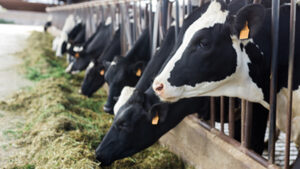Clostridium perfringens Type A is normally found in the soil and naturally inhabits the gastrointestinal tract of dairy cows. Under favorable conditions, these organisms produce a toxin suspected of causing acute gut infections and sudden death in calves (McGuirk, 2002).
With the dairy industry moving away from feeding antimicrobials such as neomycin sulfate and oxytetracycline (Neo-Terra; NT), increased emphasis has been placed on utilizing direct-fed microbials (DFM) to improve intestinal balance in calves.
Research was conducted at the University of Minnesota to evaluate pre- and post-weaning performance and health of nursery dairy calves fed milk replacer supplemented with BaciFlex®-Calf, a DFM. BaciFlex-Calf contains a strain of Bacillus subtilis specifically formulated to provide the optimal coverage based on Clostridial strains identified through Papillon’s detailed sampling, screening, and profiling procedure.
Methods
A total of 125 Holstein heifer calves were randomly assigned by source and body weight (BW) to one of five treatment diets for the trial (pre-weaning days 1-42; post-weaning days 43-56). Calves were offered free choice calf starter (18%CP; with decoquinate at 45.4 g/ton) and water from d 1-56. See below for individual treatment diets. Body weights were measured on d 1, 14, 28, 42 and 56. Over all calf health, fecal scores, and feed offered and refused were measured on a daily basis. Feed samples were taken from each bag of milk replacer, texturized calf starter and composited by treatment and analyzed for composition. Blood samples were taken on d 14 of the trial.
Nursery Dairy Calf Diets:
- CONTROL: all-milk protein, non-medicated milk replacer (MR) 20%CP: 20%Fat
- NT: control MR supplemented with NT for 14 days
- DFM1: control MR supplemented with 5g of BaciFlex-Calf Bacillus strain (1×10 9 cfu / day)
- DFM2: control MR supplemented with 5g of DFM containing Bacillus strains (1×10 9 cfu / day)
- DFM3: control MR supplemented with 5g of DFM as in DFM2 plus Lactobacillus strain (5×10 8 cfu / day)
Results
As shown in Figure 1, overall average daily gain (ADG) tended to be greater for calves fed NT and BaciFlex-Calf. The ADG for calves fed BaciFlex-Calf was +0.04 lbs over control calves (P=0.06). Total BW gain and d-56 BW were numerically greater, +2.48 lbs and +2.43 lbs respectively, for calves fed BaciFlex-Calf when compared to controls. Calves fed BaciFlex-Calf consumed +8.74 lbs more starter than control calves and +3.02 lbs more than their NT counterparts (Figure 2).
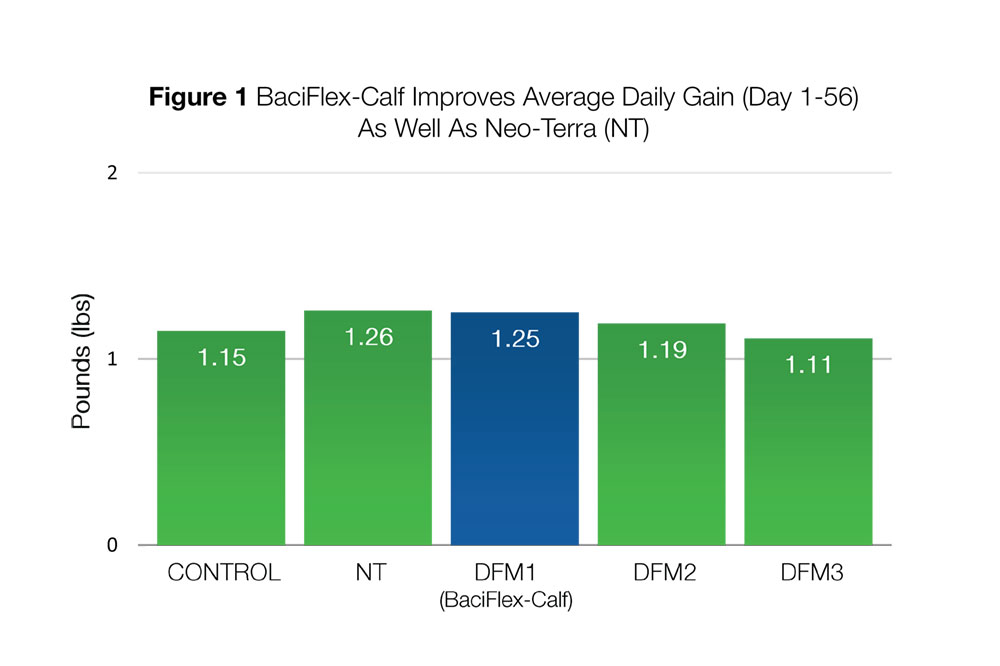
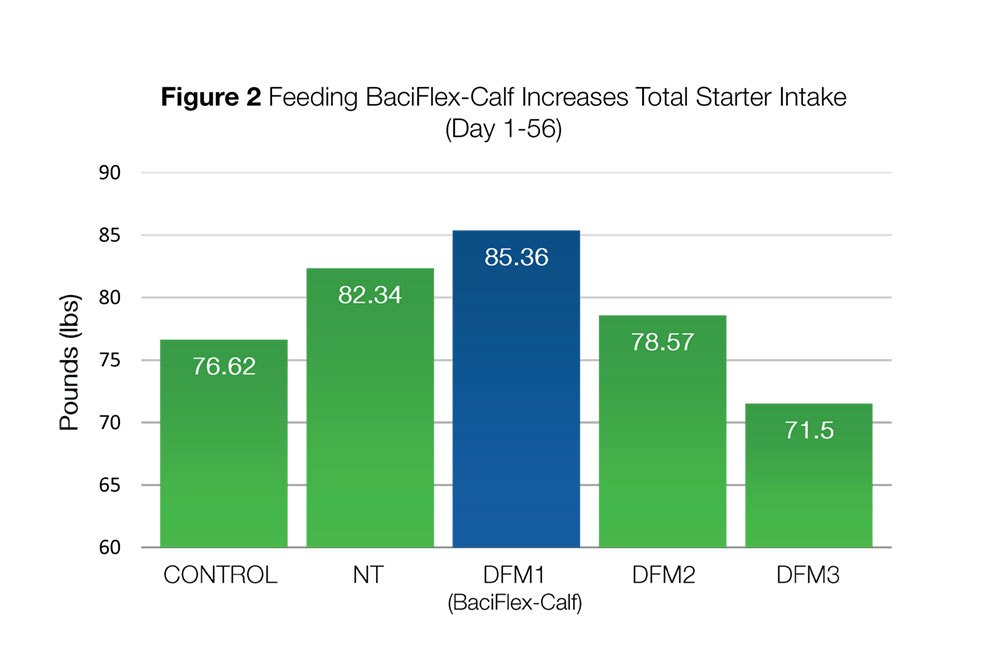
Conclusions
In this trial, nursery dairy calves fed BaciFlex-Calf performed as well as calves fed NT. The Bacillus strain utilized in BaciFlex-Calf numerically improved overall calf health and performance, providing further evidence direct-fed microbials may be used to defend against Clostridial disorders in calves.
To learn more about the science behind BaciFlex-Calf click here.
Reference
McGuirk SM (2002) Managing clostridial diseases in cattle. In: Proceedings of the 2002 midwest dairy herd health conference. University of Wisconsin School of Veterinary Medicine. https://www.vetmed.wisc.edu/dms/fapm/fapmtools/7health/manage-clostridial.pdf

